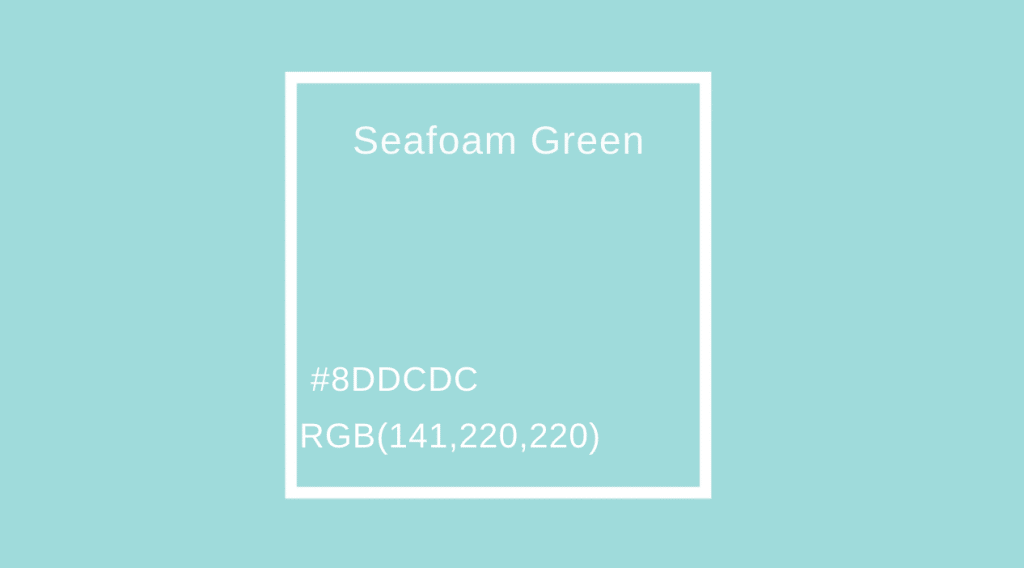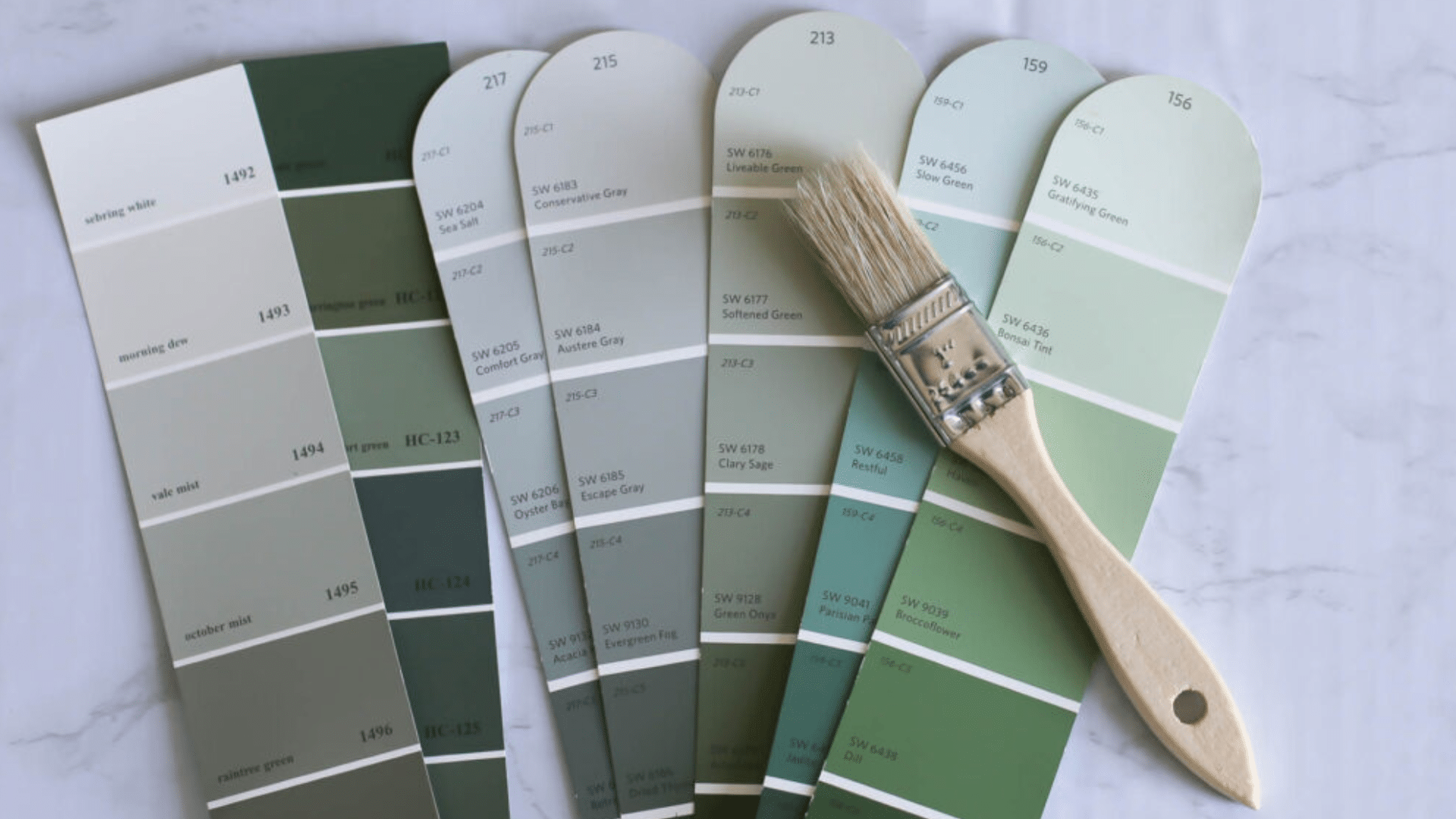Green colors bring nature’s touch to your home, making spaces feel fresh and alive. Many homeowners struggle to find the right shade that matches their style and creates the mood they want.
The good news is that green comes in many beautiful variations. From calming sage to rich emerald, there’s a perfect green for every room and style. This article will help you find your ideal green shade.
In the following sections, you’ll find 13 popular green colors that work beautifully in modern homes. You’ll learn which greens create calm, which add energy, and how to use each shade effectively.
We’ll also study current green trends and explain why green works so well in home design. Let’s find the perfect green to refresh your space.
The Power of Green: Why It Works in Any Space
Green stands out as a truly special color in home design. When you add green to your space, you bring in the calming feel of nature. Walls, furniture, or small items in green hues help create a sense of peace and balance in busy homes.
Studies show that green helps lower stress and boosts feelings of comfort. Your blood pressure may even drop when you spend time in green rooms. This makes green perfect for spaces where you need to unwind or focus.
The magic of green comes from its spot in the color wheel. It sits between cool blues and warm yellows, making it work well with most other colors. You can pair green with warm woods, cool whites, or bold brights – it gets along with them all.
Green fits many styles, too—a deep forest green works in classic homes with old-world charm. Bright lime adds pop to modern spaces. Soft sage brings calm to farmhouse styles. No matter your taste, there’s a green that feels just right.
13 Green Shades to Brighten Your Home and Style
1. Mint Green

Mint green brings a clean feel to any room. This light shade works well on walls or as accent pieces in modern homes. It pairs nicely with white furniture and gold hardware for a fresh look.
Design tip: Mix with pastel pink or gray for a balanced color scheme.
Popular rooms: Bathrooms, home offices, nurseries.
Best paired with: White, gold, light gray.
2. Forest Green

Forest green adds a rich, natural touch to your home. This deep shade creates a warm feeling in living rooms and dining spaces. It works well with wood furniture and brass fixtures.
Design tip: Use as an accent wall to make a strong statement.
Perfect for: Study rooms, living areas, cozy reading nooks.
Best paired with: Brown leather, brass, cream.
3. Emerald Green

Emerald green brings luxury to any space. This bright, rich shade turns plain walls into talking points. Use it in small doses for big impact or go bold with full wall coverage.
Design tip: Add black frames and gold accents for a high-end look.
Perfect for: Formal dining rooms, feature walls, plush furniture.
Best paired with: Gold, black, white marble.
4. Olive Green

Olive green offers a subtle, earthy base for many styles. This muted tone fits well in farmhouse and rustic spaces. It creates a cozy feel without being too dark or too light.
Design tip: Match with natural materials like jute and clay.
Perfect for: Living rooms, kitchens, and outdoor furniture.
Best paired with: Terracotta, beige, natural wood.
5. Sage Green

Sage green creates calm in busy spaces. This soft, muted shade feels like a breath of fresh air. It works well on all four walls or as a subtle accent color.
Design tip: Add plants to boost the natural, calming effect.
Perfect for: Bedrooms, bathrooms, meditation spaces.
Best paired with: White, light wood, soft pink.
6. Pistachio Green

Pistachio green adds joy to any room. This light, playful shade brings energy without being too bright. Kids love this color in their spaces, and it grows well with them.
Design tip: Balance with white furniture to keep the space fresh.
Perfect for: Kids’ rooms, craft spaces, sunny kitchens.
Best paired with: White, light blue, yellow.
7. Lime Green

Lime green makes a bold statement in any space. This bright shade works best as small pops of color. To add energy, use it for chairs, cushions, or small decor items.
Design tip: Balance with plenty of white or gray to avoid visual overload.
Perfect for: Home offices, teen rooms, modern living spaces.
Best paired with: White, charcoal gray, navy blue.
8. Hunter Green

Hunter green brings classic charm to formal spaces. This deep, rich shade has stood the test of time in home decor. It creates a sense of comfort and stability.
Design tip: Use in well-lit rooms to keep the mood upbeat.
Perfect for: Libraries, formal dining rooms, classic kitchens.
Best paired with: Mahogany, cream, brass.
9. Seafoam Green

Seafoam green makes you feel like you’re at the beach. This soft, watery shade has a clean, cool look that fits well in many homes. It creates a sense of space and light.
Design tip: Add natural textures like rope and driftwood for a full coastal feel.
Perfect for: Bathrooms, guest rooms, sunrooms.
Best paired with: Sand beige, white, light blue.
10. Teal Green

Teal green brings charm and flair to any room. This bold blue-green mix works well for statement pieces like sofas or accent chairs. It feels both classic and modern.
Design tip: Use in rooms with plenty of light to show off its depth.
Perfect for: Living rooms, creative spaces, front doors.
Best paired with: Coral, warm woods, gray.
11. Jade Green

Jade green adds a touch of class to upscale spaces. This rich, gem-like shade can make rooms feel more costly and well-planned. It has a cool, crisp feel.
Design tip: Use in rooms with good natural light to see its true beauty.
Perfect for: Main bedrooms, formal sitting areas, upscale bathrooms.
Best paired with: White marble, black, and gold.
12. Avocado Green

Avocado green brings a fun, retro feel to your home. This warm, yellow-green shade was a hit in past decades and now makes a comeback. It adds warmth to any space.
Design tip: Mix with warm woods and cream for a true vintage look.
Perfect for: Kitchens, dining nooks, accent chairs.
Best paired with: Wood paneling, cream, and brown.
13. Apple Green

Apple green wakes up sleepy spaces with its fresh vibe. This bright, cheerful shade works well in rooms that need a boost of energy. It feels young and lively.
Design tip: Use as an accent against white or gray for the best effect.
Perfect for: Craft rooms, playrooms, kitchen accents.
Best paired with: Crisp white, gray, yellow.
Green Color Trends: What’s in Fashion?
Green shades have taken center stage in home trends this year. Soft sage greens lead the pack, showing up on kitchen cabinets and bedroom walls in homes across the country.
Many people now choose this gentle color for its ability to make spaces feel fresh without being too bold. Deep forest and hunter greens have made a strong comeback in furniture. You’ll spot these rich tones on velvet sofas and accent chairs in many stylish homes. These darker greens add depth without the heaviness of black or navy.
Paint companies report that blue-greens like teal and seafoam are gaining ground fast. These colors work well in both main living areas and smaller spaces like bathrooms. They offer more energy than pure greens while still feeling tied to nature.
Top designers now mix different green tones in the same room. This layered look creates depth and interest without trying too hard. For example, you might see olive green walls with mint accents and forest green furniture all working together.
Effective Tips to Incorporate Green in Interior Design
| Tip | Description |
|---|---|
| Incorporating Green into Your Palette | Use green as accents (pillows, rugs, vases), wall colors, or even large furniture pieces to create a fresh, vibrant atmosphere. |
| Pairing Green with Other Colors | Pair green with neutrals (beige, white, grey) for a balanced and sophisticated look. Mix with blues for a calm, coastal vibe or warm tones like yellows and golds for contrast. |
| Best Spaces for Green | Green works well in living rooms for relaxation, kitchens for energy, and bedrooms for calm and restful environments. |
Conclusion
Green colors offer endless possibilities for your home. From soft sage to bold emerald, each shade brings its character to your space. The right green can transform a room from ordinary to special with minimal effort.
Remember the key points we’ve covered about using green in your home. Start small if you’re unsure – pillows, plants, or small decor items can test how you feel about a particular shade. Look at the light in your room before choosing, as greens can look different throughout the day.
Think about the feeling you want in each space. Calm bedrooms might call for sage or seafoam, while lively kitchens might benefit from apple or pistachio green. Mix different greens for depth, or pair with woods and neutrals for balance.
Why not try one of these green shades in your next home project? Whether you paint a wall, add a green sofa, or bring in some green accessories, you’ll add a fresh, natural feel to your home.
Which green will you choose first?
Frequently Asked Questions
What Colors Make Green Paint Darker if I Need to Adjust the Shade?
Add small amounts of black or dark blue to deepen your green paint. Test on a small area first before changing the entire batch.
How Can I Add Green to My Rental Home without Painting the Walls?
Use green curtains, rugs, throw pillows, plants, and artwork. These removable items add color without breaking rental rules.
Will Green Walls Make My Small Room Look Even Smaller?
Light greens like mint and seafoam can actually make small rooms feel bigger. Dark greens work better in rooms with good natural light.
How Do I Know if a Green Has Warm or Cool Undertones?
Greens with yellow mixed in (like olive or avocado) are warm, while greens with blue mixed in (like teal or seafoam) are cool.


